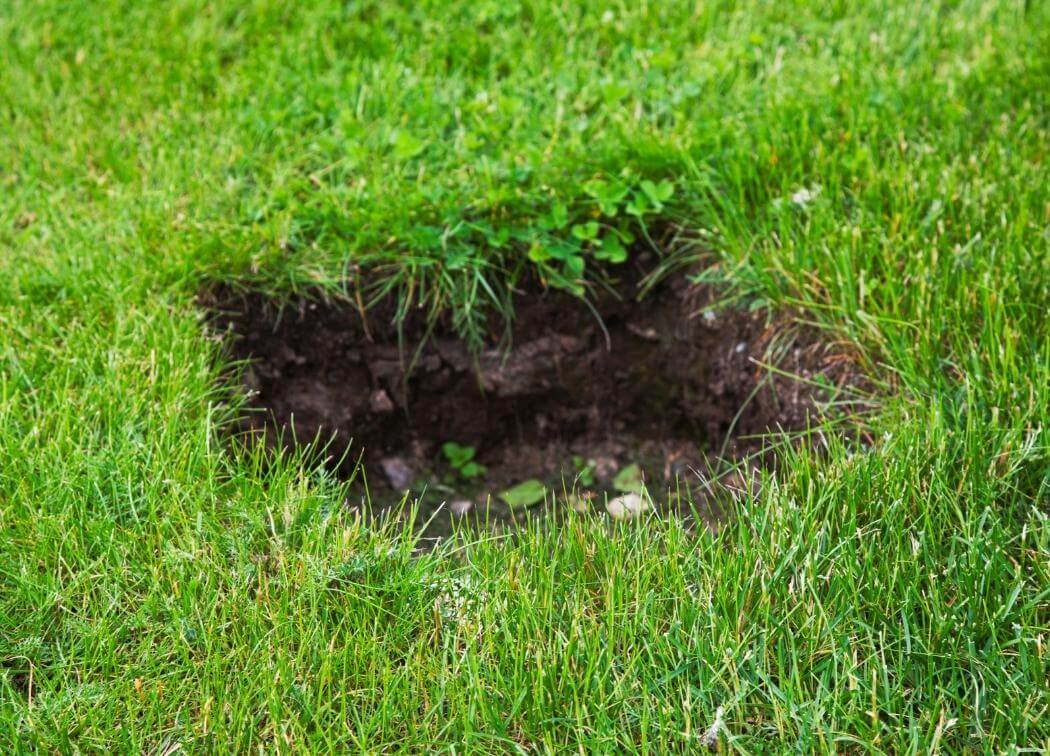There’s nothing more frustrating than finding holes in your lawn and having no idea where they came from. Not only does it NOT look good, but it’s also unhealthy for your lawn.
But we’ll help you dig (pun intended) into your causes, and you’ll fix those holes in your lawn in no time.
Holes in yards or lawns are pretty normal, some common causes are:
Causes of Holes in Your Lawn
Finding the cause is your first step. Knowing who is digging holes helps you regulate and control your lawn.
Small Earthworm Holes
You probably know what earthworms are. They’re legless worms that naturally thrive in soils.
And though it doesn’t seem like it, earthworms are healthy for your lawns. Earthworm holes are necessary for aerating the soil.
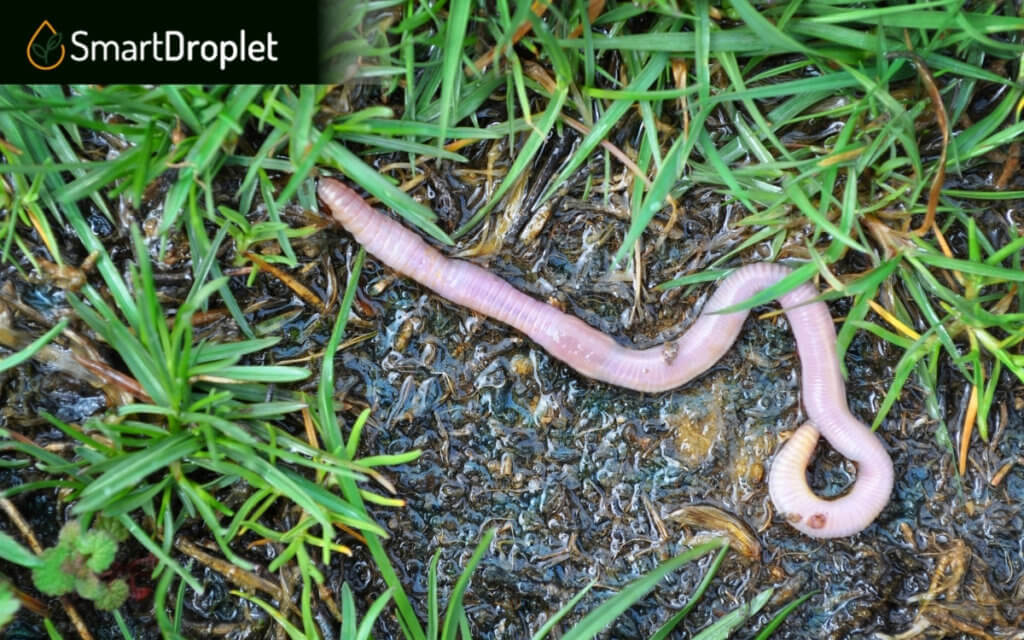
How to Identify Small Earthworm Holes
Holes caused by earthworms are small, with a residue of soil granules around them. You can typically see soil mounds on top of the small holes.
They’re more rampant during spring and fall because of the warmer temperature.
How to Control Small Earthworm Holes
These small holes are beneficial, so it shouldn’t be a problem aesthetic-wise.
In most cases, they’re barely noticeable. Avoid getting rid of them since they’re helpful to your lawns.
But if it becomes unmanageable, you can control the earthworm activity without harming them by:
- Let the muddy castings dry out first and sweep them away to avoid the unpleasant visual.
- Collect mowing clippings to somehow lessen the earthworm activity.
Voles
Some of you may not be familiar with voles. They’re small rodents or field mice that eat your crops, such as grass, seeds, shrubs, and tree roots.
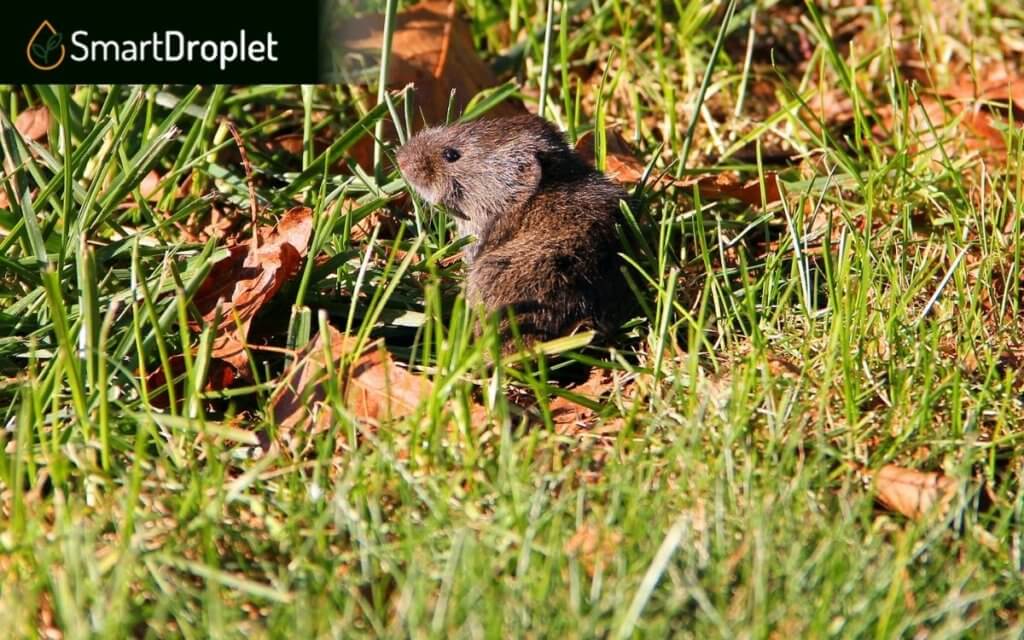
They reproduce fast, so if you want to control these type of holes, you better act fast too.
How to Identify Vole Holes
A vole hole is approximately the size of a golf ball. The best way to assess is to check the surroundings. If you see chewed grass clippings or tiny trails of dead grass, that’s most likely the work of a vole.
Another sign is their wastes since some voles tend to live where they dig holes. Look out for oval-shaped droppings (or poop)around the area and small holes to confirm.
How to Control Vole Holes
Voles are rodents, or basically like rats. And we know how hard it is to control infestations like this. If you can, you may opt to call rodent control services to help, especially if they’ve already reproduced.
But if your case is mild, you can try a vole repellent first to see if it works.
Moles
Moles are larger creatures that feed on underground insects, earthworms, and other soil organisms. They dig underground tunnels that are deep enough (about 10 inches) for them to live and reproduce.
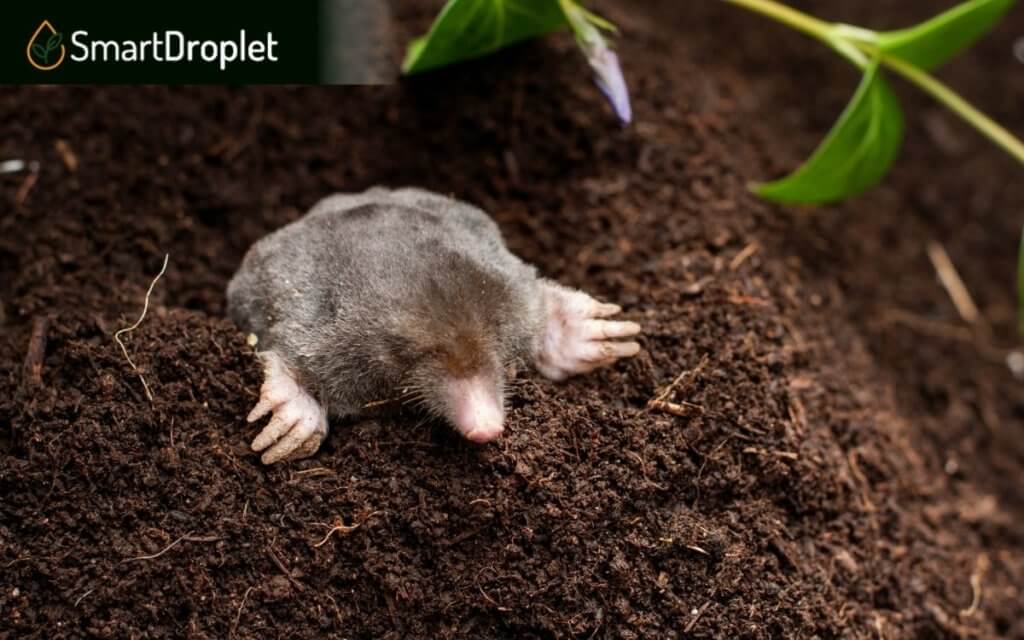
How to Identify the Holes
Mole holes are easier to spot.
They’re enormous with conical mounds and a raised soil covering. There’s usually a muddy mound pile instead of an obvious opening.
In easier words, the holes look like a mini mountain or volcano.
How to Control
Moles are not interested in your plants. But the large and small holes they dig can be damaging and visually unpleasant for your lawn.
You can try using natural repellents first, like garlic, daffodils, or alliums.
But like voles, they can be harder to control. You may find the help of pest control experts extra helpful.
Rats
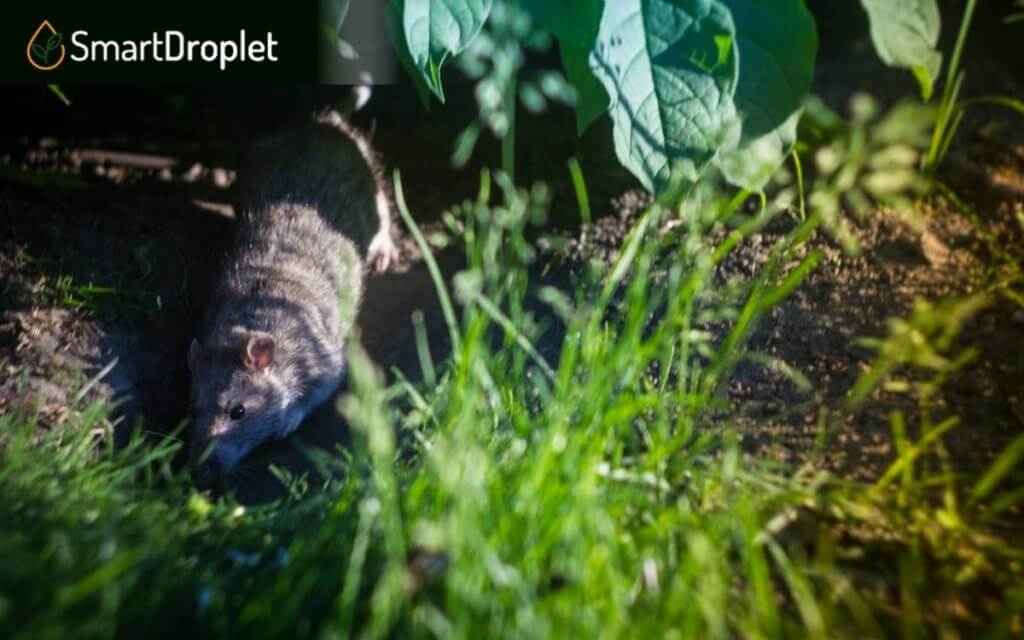
Rats eat plants and insects. If you’re growing food crops, grass roots, fruits, and vegetables, an infestation may be a big problem for you.
How to Identify the Holes
Rat holes are 2-3 inches in diameter. You can find them in areas such as tree snags, large roots, log piles, and garbage piles.
Around the holes, you’ll see signs of gnawing or particles of soil that look like it was thrown out from the hole.
How to Control
A rat infestation is difficult to manage on your own. As soon as you see suspicious holes in your lawn that may have been dug by a rat, start taking action.
You can cut off overgrown grass, plant natural rat repellent, or scatter castor oil pellets to divert the rats elsewhere.
Gophers
Gophers love to eat and chew on trees, shrubs, roots, and flower bulbs. If you are growing these plants, the holes in your yard are probably by a gopher.
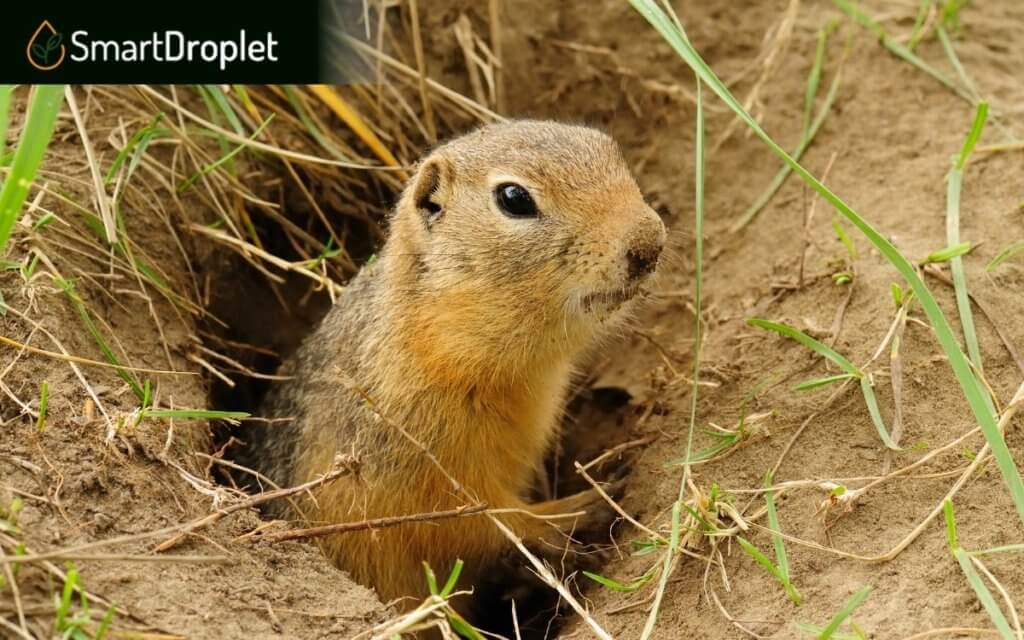
How to Identify the Holes
Gophers look similar to moles. Their holes also look the same, with the rounded mounds of dirt usually located near where they eat.
If you see traces of grass blades in the tunnels, chances are, it’s the gophers! The clue here is that since they eat the roots, they often leave trails of grass blades around the holes.
How to Control
Like moles and rats, you can control gophers with natural repellents such as castor oil pellets. You can also get rid of them using fabric softener sheets or peppermint oil.
The scent and components will drive them away.
If it’s out of control and you need to kill them, The Giant Destroyer repellent proves to be effective.
Many people are determined to get rid of gophers because their holes significantly affect the soils. Often, their activities result in uneven ground levels.
Insects
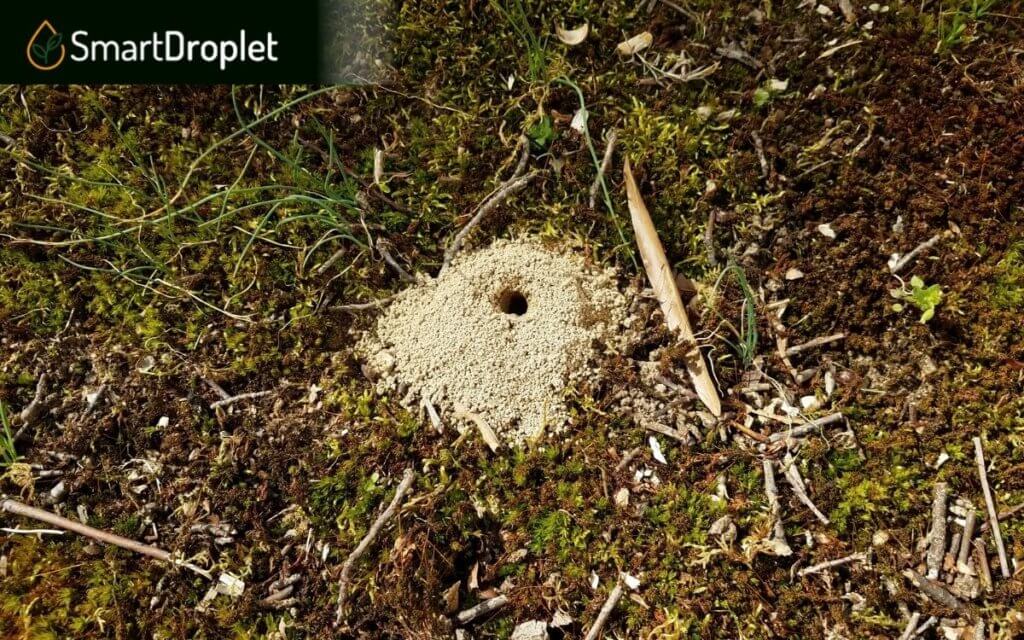
Insects are the trickiest to control because they’re tiny and are often in swarms.
The worst part is that insects lay eggs, dig holes, and reproduce quickly. And to add, insects attract the other hole suspects!
Examples of common insects are Japanese beetles and wasps (Cicada killer wasps and Scoliid wasps).
How to Identify the Holes
Holes caused by insects are small but a lot. Japanese beetles lay eggs on the ground, and as the larva grows, they dig small holes and eat grass roots.
All these happen quickly too, usually in early summer and spring.
The larva will then attract other animals, such as raccoons and armadillos. They can potentially start digging holes to find the Japanese beetles as well. It’s a messy chain of infestations!
There are TWO COMMON KINDS of wasps: the Scoliid wasps and Cicada killer wasps.
Scoliid wasps dig holes in search of grubs. And grubs eat your plants, too, causing irregular brown patches.
On the other hand, Cicada killer wasps create shallow holes (about an inch in diameter) to drag and bury their prey for food.
Other insects that we’re more familiar with are ants and termites. As we know, ant hills and ants attract birds, and other animals dig in lawns to look for them.
How to Control
Insects are difficult to control, and they seem to make a sudden appearance on your lawn overnight.
The key is to get pest control chemicals and repellents that won’t harm your new grass or existing edible plants.
For Cicada killer wasps, they’re attracted to short grass. If you have a problem with these insects, you may want to avoid trimming your grass too short and keeping the ground exposed.
But don’t worry, insects are normal. Unless they go out of hand, there’s nothing to worry about.
Chipmunks And Squirrels
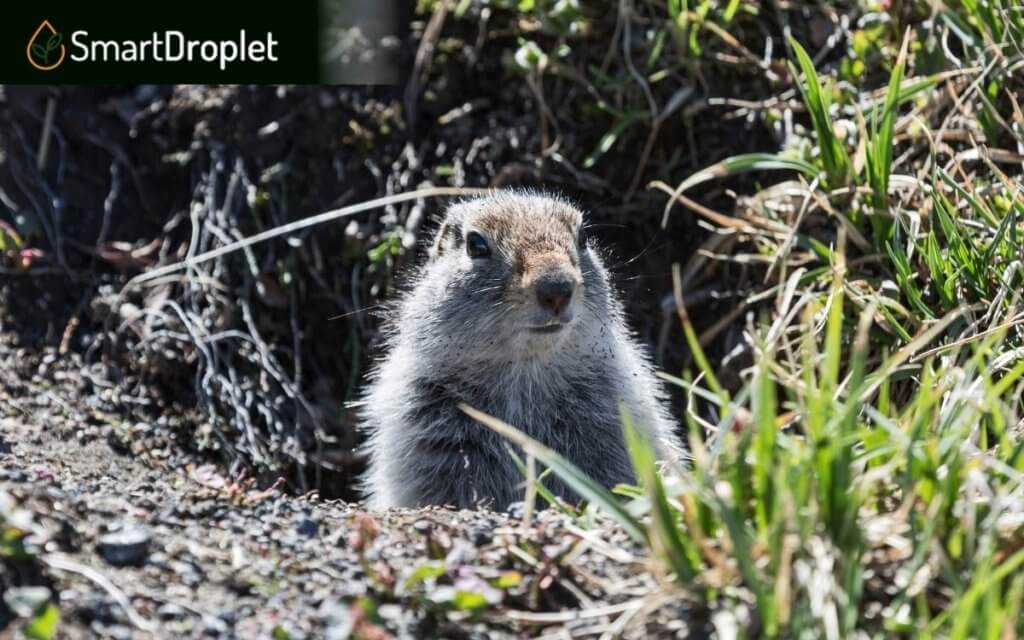
While chipmunks and squirrels are cute, the holes created are often big and destructive. They don’t usually eat your crops, but they dig holes to hide their food and prey.
How to Identify the Holes
Eastern gray squirrels are the most common type. They dig a shallow but large hole without mounds of soils around them (yes, opposite to holes created by moles).
Chipmunks dig holes for hiding. You can spot these holes in lawn areas like log piles and stumps.
How to Control
Note that chipmunks and squirrels are wild animals. It’s not easy and safe to catch them on your own without prior knowledge. We suggest consulting wildlife experts for help.
Armadillos
Armadillos are not common animals. If you don’t have these creatures in your location, you can skip this.
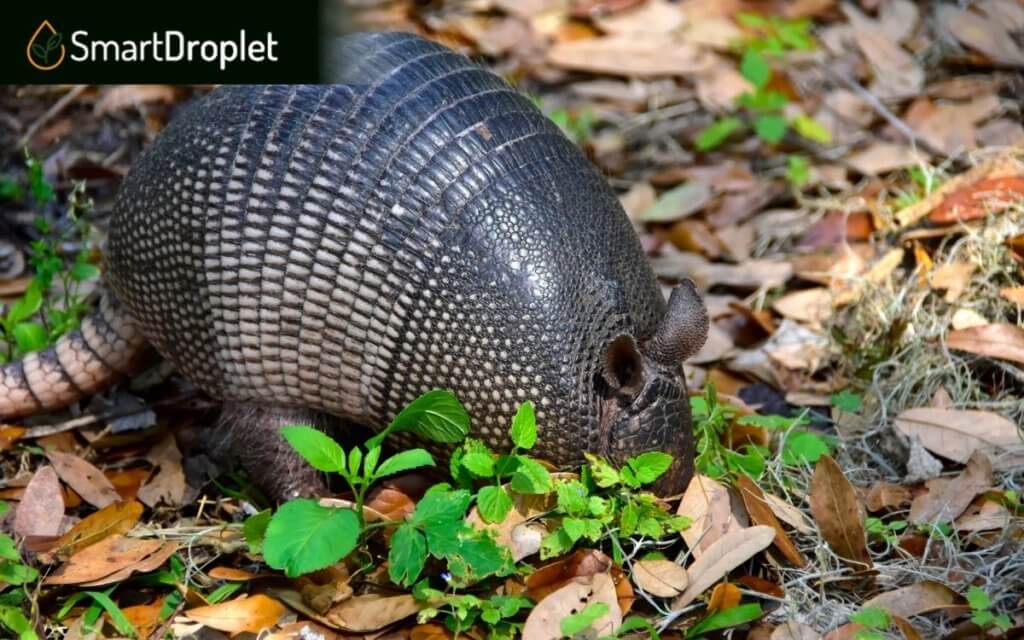
How to Identify the Holes
Armadillos dig holes that are shallow to look for their food, which are ants, grubs, and other insects. Some signs to locate around the area are dead grass, ants, brown patches, etc.
While it could very well be the activities of common lawn pests and insects, these signs paired with shallow and small holes (but bigger than insect holes) could be indicators of armadillo activity.
How to Control
Since armadillos are attracted by ants and grubs, you must first control the root cause. You may refer to the heading about insects for reference.
Birds
If your lawn is suffering from insect infestation, you might find birds helpful. Although they also cause shallow divots and holes in the yard as they look for insects and food.
How to Identify the Holes
Most birds go to work early in the morning. If you notice that they’re not small overnight holes and seem to only appear in the morning, that’s a good sign that it is bird activity.
Since birds only use beaks, they create small holes to look for ants, grubs, and other kinds of insects.
How to Control
Similar to armadillos, birds create holes in lawns because of an underlying reason – their food source. To effectively get rid of them, you’ll have to solve the problem of ants and grubs first.
Crayfish
While it sounds impossible, the holes in your lawn could be caused by a crayfish. It’s a plausible option, especially if you live near water areas.

How to Identify the Holes
Crayfish use mud balls to dig small holes. They look like tiny towers that are about 3-inches high and 2-inches wide.
Underneath these towers are deeper holes that lead underwater where the crayfish come from.
How to Control
Some people will suggest digging through the small holes in the lawn and catching the crayfish. If you can’t, calling experts will be the wiser choice.
These crayfish may hurt you as you disturb them and dig tunnels through the habitats they built. If it doesn’t harm your lawn badly, you may choose to ignore them.
Pets
We may not want to admit it, but your dog digging holes in your yard is a very likely possibility.
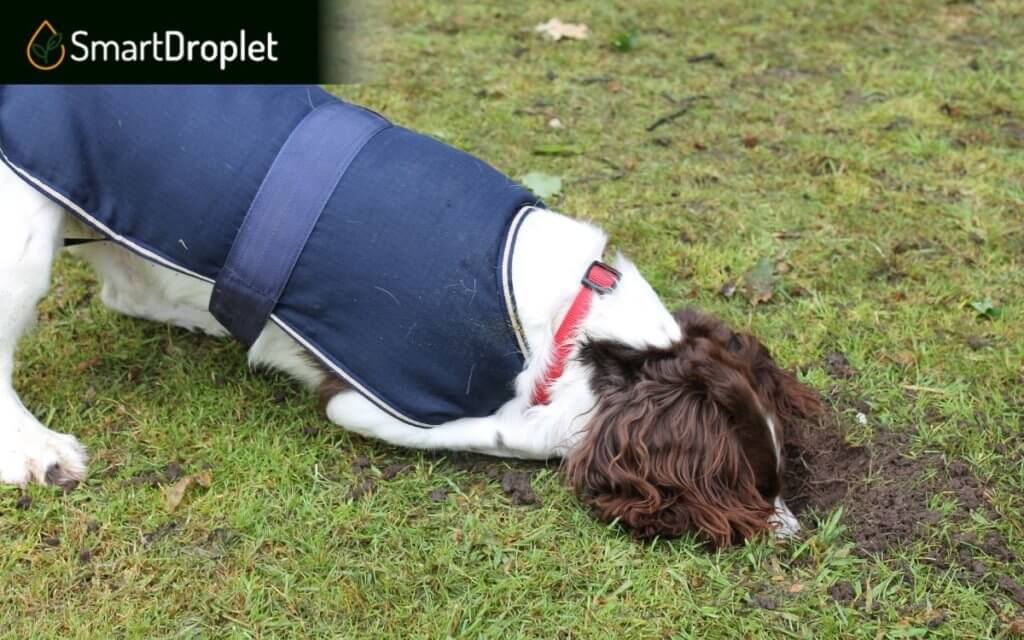
How to Identify the Holes
But on the flip side, dog holes in your lawn are easy to spot. They’re most likely large and deep, and you’ll notice your pet returning to the same spot frequently.
How to Control
Other than digging holes, dogs unintentionally harm lawns as they play or urinate in the area. It’s a behavior you have to train and control as a dog owner.
When dogs dig holes in your lawn, they’re probably bored and want to play. You may need to divert their attention or restrict them from going to the lawn until they’re well-trained.
Children
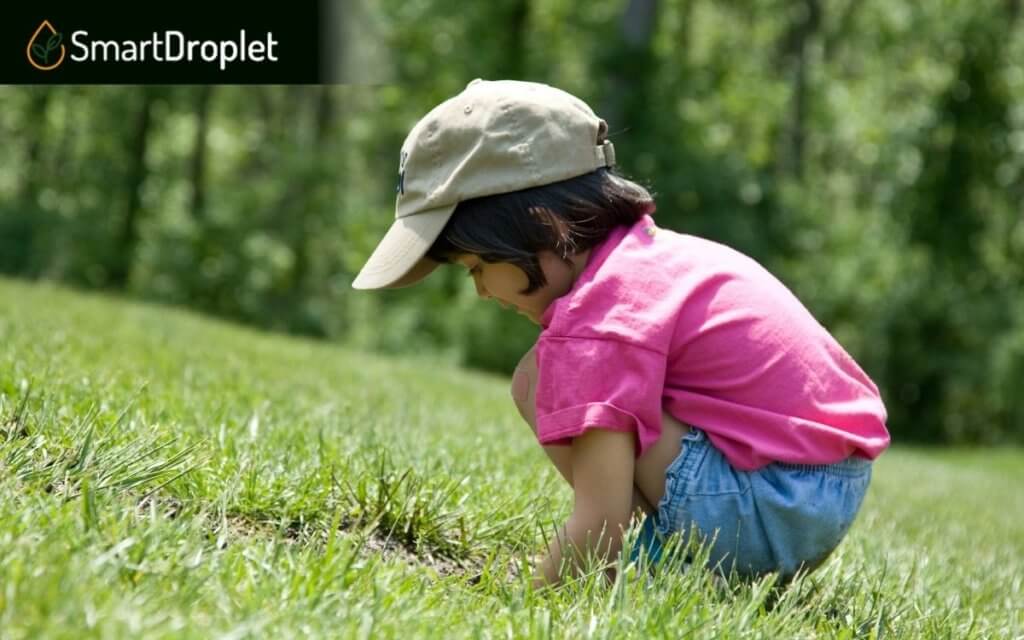
But before you panic about insects and wild animals, try checking if it’s your children playing in the yard. Sometimes, they can cause holes as they run and play.
We won’t tell you to plant granular pellets to repel your children. That’s probably not legal. But kidding aside, always supervise your children.
Besides harming lawn health, dirt and bacteria are also dangerous for them.
How to Fill/Fix Small Holes in Your Yard
Controlling pests on your lawn overnight may not be possible, but fixing those small holes is easy and doable.
Mild Cases (Small Holes; Manageable)
The small overnight holes are easy to manage. Often, the hole is small, and the harm is not severe. Get yourself some soil (topsoil or any type of dirt) and cover the holes in your yard.
Use your rake or shovel to scatter the particles until the entire hole is covered well.
Moderate Cases (Small Holes to Medium Holes; Mild Infestation)
More work is required for cases that were unnoticed or unsupervised and are now moderately bad.
- Pry up the damaged and sunken grass using a flat shovel.
- Cut the areas (1-foot grass sods) using your shovel. You will now have a bigger hole.
- Cover the hole with new soil and replace the grass sods that you dug up earlier.
Severe Cases (Large, Deep Holes, and Infestations)
Sadly, the severe cases might have to start the lawn afresh. If the damage is already widespread and uncontrollable, it will cost you time and money to keep repairing a recurring problem.
Starting anew means:
- Excavating the remaining lawn
- Total pest control
- Planting new grass and new grass seeds
- Planting new crops
And this time, it’s also important to be stricter with lawn regulations and have daily inspections.
Frequently Asked Questions [FAQ]
We’ll address some questions that we’ve encountered concerning this topic.
What Are Natural Repellents? Can They Fix the Lawn Overnight?
Most repellents are toxic chemicals that can potentially kill off pests.
While they’re effective and fast, some people don’t like using them as they could be harmful to humans, edible crops, or they don’t want to harm the animals in general – just shoo them away.
Some examples of natural repellents are castor oils, peppermint oils and leaves, and cayenne or black pepper. No, they may not solve the problem of your lawn overnight, but it’s a safe way to get rid of pests.
What Are Other Ways to Treat Damaged Lawns?
It’s always a good idea to maintain a healthy lawn in whatever circumstance. Here are some activities you can do:
➔ Daily inspection.
➔ Cover visible holes immediately. If they recur, find out what causes it.
➔ Observe the hole patterns and look for trails.
➔ Mow the grass around the hole.
➔ Plant new crops as much as you can.
Which Among the Causes Should I Be Worried About?
Those that dig large tunnels deep into the ground are more worrisome. Some examples are rodents such as gophers, moles, and voles.
They don’t only live in those holes, but they also eat your crops and plants.
Creatures like squirrels and chipmunks only dig shallow holes to store food. While it’s not pretty, they’re not detrimental to the lawn’s health.
You should also be alert to pests like grubs and ants because they attract other big animals. Plus, they’re small but extremely difficult to manage.
Conclusion
It’s frustrating to fix holes in your lawn overnight or restore lawn health immediately, but trust us, it gets better.
These large and small holes are natural activities of plants, animals, and insects. So, understand that they are only trying to eat and survive. Try our tips and let us know.
Good luck!


